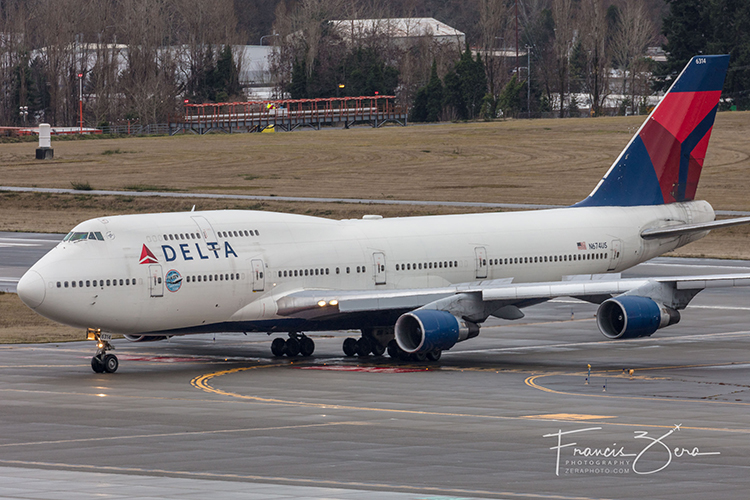
Delta’s Queen of the Skies (N674US) took a victory lap across the country on Dec. 18
With Delta Air Lines’ last 747 now in the boneyard at Pinal Airpark in Arizona, we thought it would be a good time to look back at the next-to-last farewell tour in late December when it visited both the Boeing plant of its birth and Seattle-Tacoma International Airport.
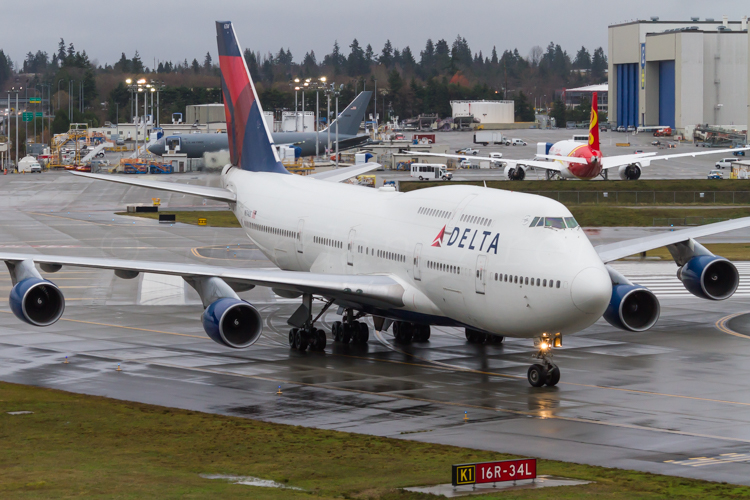
N674US taxiing at Paine Field in Everett – Photo: Jordan Arens
This particular bird (N674US – LN: 1232) first flew on September 30, 1999 and was delivered to Northwest in October of that year. It was transferred to Delta’s fleet in June of 2009 and flew with the airline until being put out to pasture. With the retirement of these iconic planes from Delta’s fleet, no U.S.-based passenger airline flies them any longer (unless you count Atlas and their charters).

Last month, I wrote about the amazing time I had flying seat 1A on a United 747. I mostly focused on the 747 and the awesome view from my seat, which may have left some of you wondering about my experience with United’s so-called “Polaris Global First.” It’s a cabin class that won’t exist for much longer, as United is phasing out long-haul first class as part of its long-awaited Polaris rollout.
Well I’m back with an in-depth review of the Polaris Global First seat, service, food, features, and more. Did the experience leave me delighted or disappointed? Should you be rushing to try Polaris Global First out before it’s gone for good? Read on to find out.
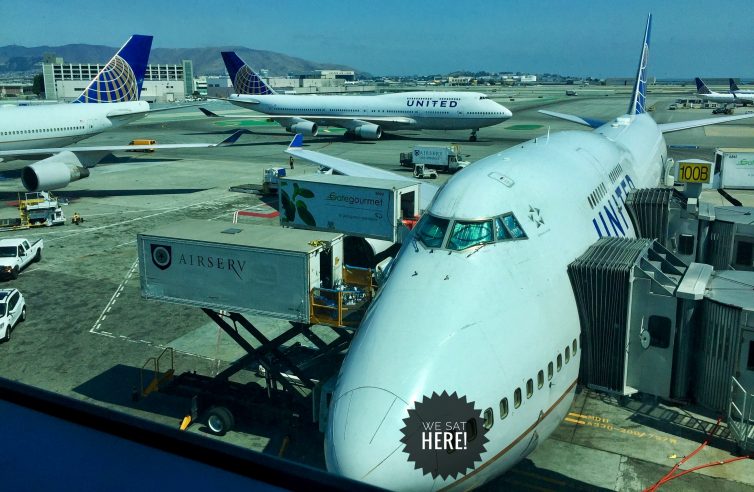
Our seat on the ride of a lifetime – Photo: Manu Venkat | AirlineReporter
Groundbreaking. Iconic. Gigantic. Gorgeous. There’s a lot of words you could use to describe the 747-400, but as of 2017 there’s a new word that gets added to the list: disappearing. Most airlines are rushing to retire the aging beauty. A few airlines, like British Airways, plan to keep the Queen of the Skies around for a while longer. But in general, if you want to make sure you get one more flight on the aircraft that — for many of us — is the ultimate AvGeek icon, you should make it happen soon.
A ride on a 747 is special, no matter where you’re sitting. However, it’s extra awesome if you’re in the first few rows of the main deck, which give you a one-of-a-kind partially forward facing view. You can actually see the runway ahead of you as you take off and land! We made sure to include a ride on a United 747 in seat 1A as part of a recent around-the-world Star Alliance tour, and from an AvGeek perspective, it was the flight of a lifetime. We took plenty of photos and videos for your viewing pleasure — read on to re-live the magic with us.
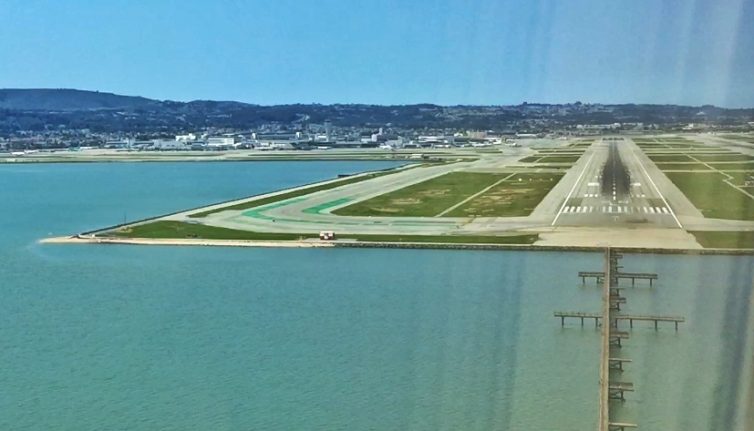
A view that should be on every AvGeek’s bucket list – Photo: Manu Venkat | AirlineReporter
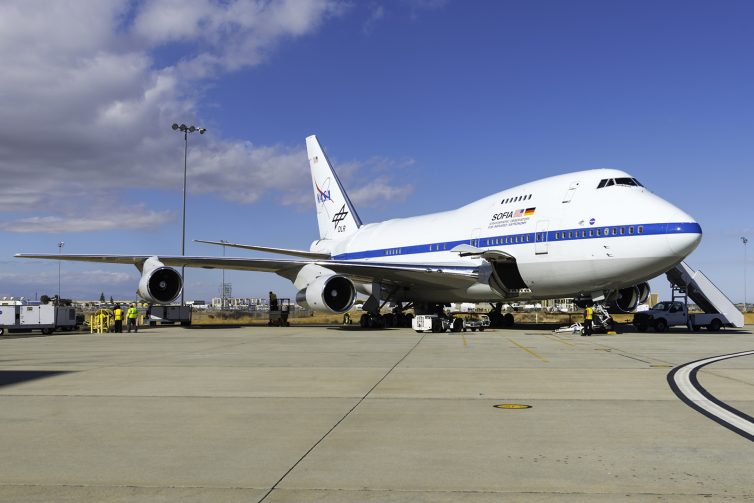
This is N747NA, better known as SOFIA- the Stratospheric Observatory for Infrared Astronomy – Photo: Bernie Leighton | AirlineReporter
You know, despite being a carbon-based life form and therefore largely composed of water molecules – that doesn’t mean I have to like water vapor.
It’s annoying. Think about it? You come in from outside into a warm room and your glasses fog up. Water vapor condenses and produces fog, which keeps me from flying. Sometimes, water vapor even contains annoying minerals resting in solution that can damage precision electronics. If you think I am annoyed by water vapor, talk to an astronomer! It’s worse for them.
Imagine being on the only habitable planet you know of, but having the atmosphere that keeps you alive act like a giant opaque blanket. Gross, right? That’s Earth!
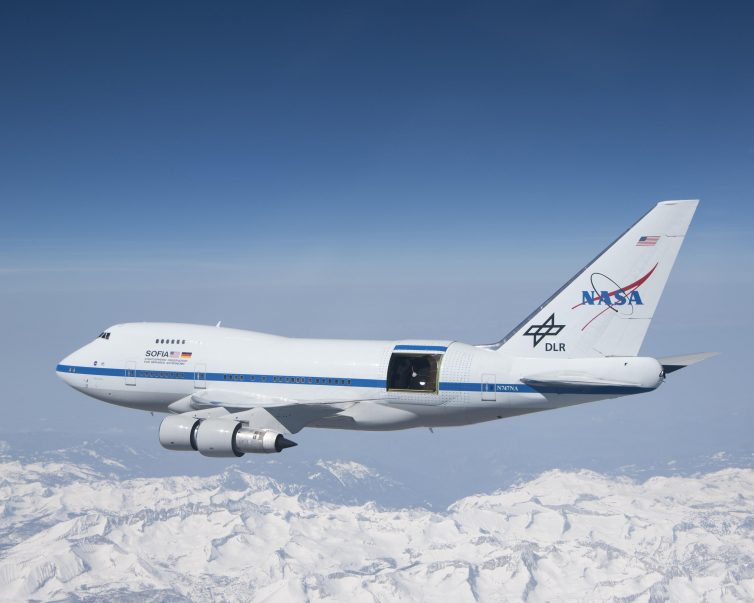
With the sliding door over its 17-ton infrared telescope wide open, NASA’s Stratospheric Observatory for Infrared Astronomy ’“ or SOFIA ’“ soars over California’s snow-covered Southern Sierras on a test flight in 2010 – Photo: NASA
Now imagine that you want to look into the vast reaches of the cosmos, at wavelengths below what the human eye can see, which also happen to be even more affected by the water vapor that resides within the lower atmosphere. A recipe for despair.
The best way to get above the earth’s vapor-barrier would be to build a satellite. I think everyone agrees on that.
If, long after your natural life ends, the billions of dollars in funding you requested to build a satellite is approved – they might name it after you and your grad student’s grandchildren may be able to profit from the data. That doesn’t seem like the best idea for continuing research at a regular tempo does it? What do you do? Well, beyond actually funding scientific endeavors more, there is a second choice.
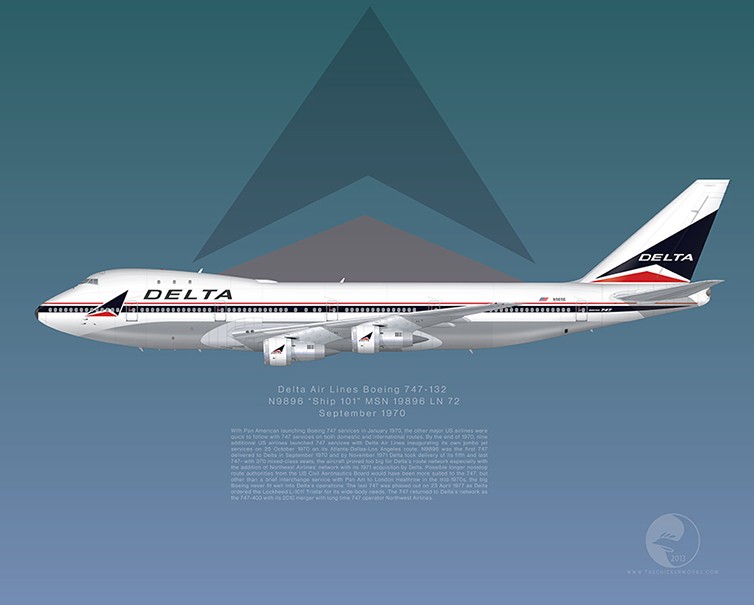
Delta’s first 747-100, N9896 ’œShip 101’ as it looked on her delivery in 1970 – Image: JP Santiago
On 9 September 2015, the very first Boeing 747-400 built, N661US, touched down at Atlanta from Honolulu as Delta Flight 836 for the last time in revenue passenger service. Ship 6301 was the Boeing 747-400 prototype, which was delivered to launch customer Northwest Airlines on 8 December 1989 and came over to Delta with the 2008 merger. There are twelve remaining 747-400s flying with Delta, all of which came over from Northwest. Current fleet planning will have these 747s retired in 2017.
Delta did however, for a brief time, operate the first variant of the 747 family, the 747-100, from September 1970 to April 1977. Only five aircraft were taken on strength with Delta and while the 747-100 was but a short historical footnote in Delta’s history, its legacy looms large to this day with the airline.
In order to understand what the 747 was for Delta at the time, one has to consider that as the 1960s were drawing to a close, Delta was in the midst of transition on several fronts. The first change came with the Southern Transcontinental Route Case of 1961. Prior to deregulation, airlines usually had to make a case for the opening of new services and routes to the Civil Aeronautics Board (CAB). Often these cases consisted of years of deliberation, and politics played a central role in airlines winning favorable rulings from the CAB. In the 1950s, the CAB favored interchange services as a means for airlines to open up new markets without saturating a given route with an excess of seats, harming profitability.
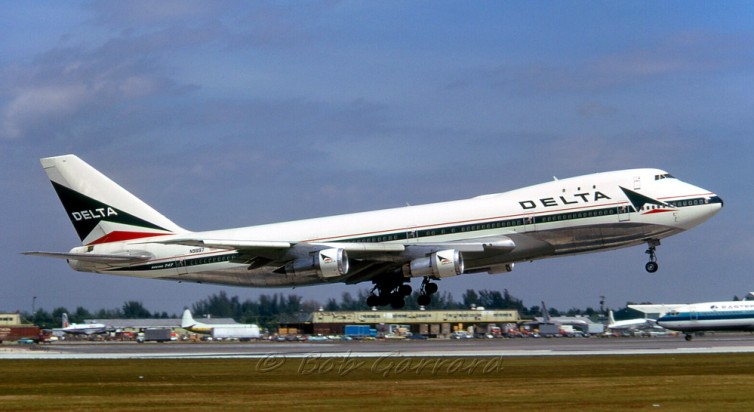
A Delta Boeing 747-100 (reg: N9897) taken in Miami in 1974 – Photo: Bob Garrard
Having a predominantly southeastern U.S.-anchored network, Delta linked up with several other airlines to offer interchange services which allowed it to fly as far west as California. As traffic grew on the interchange services to the west coast, Delta petitioned the CAB to operate the west coast services on its own, and in one of the more historic decisions made by the CAB, both Delta and National Airlines were given route authorities to California from the southeast in what was called the Southern Transcontinental Route Case.








